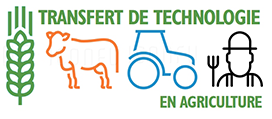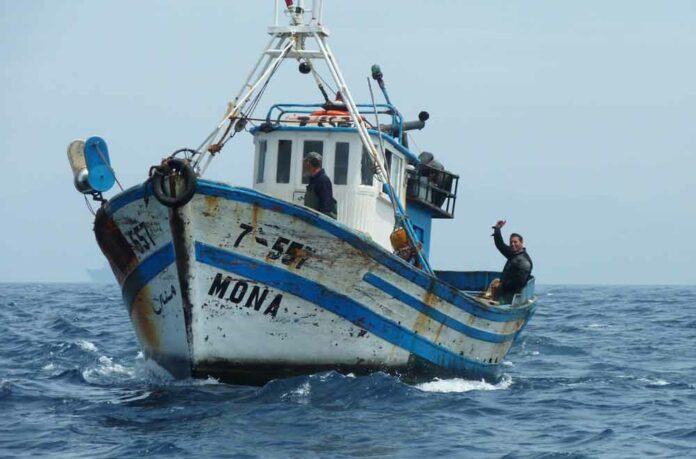Economic performances indicators of coastal purse seiners: Case of Atlantic Center of Morocco
A. KAMILI1, M. R. DOUKKALI2, A. LAABDI1
1 Institut National de la Recherche Halieutique (INRH), Agadir, Maroc
2 Institut Agronomique et Vétérinaire Hassan II, Rabat, Maroc
Abstract
The small pelagic fishery covers more than 80% of national fish production with more than one million tons of catch near coastal areas. This fishing intensity in such a limited area could lead to overfishing and a decline in the economic activity of the coastal purse seiners. Given the possibility of this threat, this article aims to study the economic performance of coastal purse seiners based on their operating accounts. Of a total of 557 registered coastal purse seiners, 128 were studied. On average, they generate a turnover of 2.97 million MAD/year and an annual added value of 2.02 million MAD/boat. Vessel size, operating costs, composition of landings and destination markets are the main factors influencing the economic performance of coastal purse seiners. The retained economic performance indicators are the return on investment and the profit margin. These represent respectively 9.2 % and 9.7 % for large vessels, and 0 % and -0.1 % for small vessels. These low levels constitute a major obstacle to the regular renewal of fishing units, due to the relatively high average annual bank credit interest rate (12.5 %).
Keywords: Indicators, economic performance, coastal purse seiners, Morocco.
Indicateurs de performance économique des senneurs côtiers: Cas de l’Atlantique Centre du Maroc
Résumé
La pêche aux petits pélagiques couvre plus de 80 % de la production halieutique nationale avec plus d’un million de tonnes de capture près des zones côtières. Cette intensité de pêche dans une zone aussi limitée pourrait entraîner une surpêche et une baisse de l’activité économique des senneurs côtiers. Compte tenu de la possibilité de cette menace, cet article vise à étudier les performances économiques des senneurs côtiers sur la base de leurs comptes d’exploitation. Sur un total de 557 senneurs côtiers enregistrés, 128 ont été étudiés. Ces derniers réalisent en moyenne un chiffre d’affaires de 2,97 millions MAD/an et une valeur ajoutée annuelle de 2,02 millions MAD/bateau. La taille des navires, les coûts d’exploitation, la composition des débarquements et les marchés de destination constituent les principaux facteurs influençant la performance économique des senneurs côtiers. Les indicateurs de performance économique retenus sont le retour sur investissement et la marge bénéficiaire. Ceux-ci représentent respectivement 9,2% et 9,7% pour les grands navires, et 0 % et -0,1 % pour les petits navires. Ces faibles niveaux constituent une entrave majeure au renouvellement régulier des unités de pêche, en raison du taux d’intérêt annuel moyen du crédit bancaire relativement élevé (12,5 %).
Mots-clés: Indicateurs, performance économique, senneurs côtiers, Maroc.
INTRODUCTION
Small pelagic fishing is one of the fishing activities, socially and economically important in Morocco. According to the Moroccan National Board of Fisheries (ONP) statistics, it represents more than 80 % of the total landings of which sardine alone accounts for 65 %. This fishery largely contributes to employment, processing industry and export. Thus, sustainability of this fishery is targeted as a priority in the context of the national strategy[1] of the sector development (DPM[2], 2009).
To develop an effective policy and to evaluate the impact of the current measures based on the national strategy, socio-economic surveys and analyses are essential. Indeed, to achieve sustainable fisheries, it is necessary to investigate and monitor the economic development of the fishing industry. Since July 2010, Moroccan National Fisheries Research Institute (INRH) in partnership with Japan International Cooperation Agency (JICA) have launched a capacity development project for fisheries monitoring of small pelagic resources. As a part of this project, we focused on the coastal purse seiners in the Atlantic Center of Morocco which account for 62 % of the total of vessels fishing small pelagic (Kamili et al., 2012).
The purpose of this article is to contribute to the knowledge of fishing economic performance and highlight its determining factors, by examining revenues, costs, return on investment, profit and margin of some coastal purse seiners in the studied region. Data was collected from fishing sector government institutions and by use of a questionnaire and interviews with ship-owners, skippers and crewmembers.
PROBLEMATIC OF SMALL PELAGIC FISHERY IN MOROCCO
The system of exploitation of small pelagic fish is based on four components constituting the framework of the sector, namely: resource, fishing effort, processing and market. These elements, closely related, are defined as an economic system bringing together the channels of supply, processing and distribution. Constraints that prevent the development of this system are various. The complexity of the institutional environment and the low involvement of professionals in the management process (fishermen and processors) have led pelagic resources to situations of full or overexploitation with the exception of sardine in zone C “south of Morocco “(FAO, 2013 and 2015). Small pelagic are also highly affected by hydro-climatic conditions, which lead to inter-annual fluctuations in composition, abundance and geographical distribution.
By their mobility, pelagic resources can affect the purse seiners performance. Indeed, fishermen have to go in search of fish and often the search time exceeds the actual fishing time, which leads to additional time and cost loss and affects the regularity of raw material supply for the factories.
The economic benefits expected from the exploitation of small pelagic resources can be sustainable only if specific management measures are applied according to the characteristics of each fish stock. Thus, faced with these constraints, a development strategy of the fisheries sector, called “Halieutis”, was implemented. Among its objectives is the development of the small pelagic fishery in the southern Kingdom, where there is considerable potential for small pelagic resources. These objectives also aim to set up a monitoring and evaluation program for the entire fishery.
This strategy is articulated around three axes (DPM, 2009), namely:
- Sustainability: Sustainable exploitation of resources.
- Competitiveness: Well valued products and competitive on the most promising markets.
- Performance: An organized and equipped sector for high quality, from landing to commercialization.
The choice between exploitation levels and fishing units profitability is one of the main challenges that embarrasses fishery managers. In this context, the purpose of this paper is to contribute to the knowledge of one of these three axes, namely the performance, focusing on coastal purse seiners. Therefore, the objective is to look for the main determining factors to this performance, taking into account the key economic indicators characterizing this fishery.
Source sur Revue Marocaine des Sciences Agronomique et Vétérinaires et ficher PDF
https://www.agrimaroc.org

